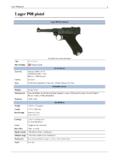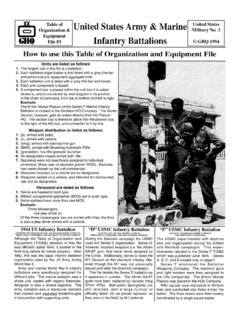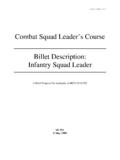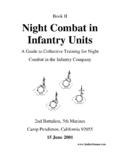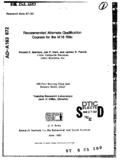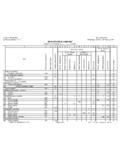Transcription of Mosin Nagant - 2. Gebirgsjäger
1 Mosin Nagant1 Mosin Nagant Mosin - Nagant Mosin Nagant series of rifles Type Bolt-action rifle Place of origin Russian Empire Soviet Union Service history In service 1891 - present Used by See Users Wars Russo-Japanese WarWorld War IRussian Revolution of 1917 Russian Civil WarChinese Civil WarWorld War IIKorean WarVietnam WarSpanish Civil WarWinter WarContinuation Warothers Production history Designer Captain Sergei Mosin , L on Nagant Designed 1891 Manufacturer Tula, Izhevsk, Sestroryetsk, Manufacture Nationale d'Armes de Ch tellerault, Remington, New EnglandWestinghouse, many others Produced 1891 - 1965 Number built approx 37,000,000 (Russia/Soviet Union) Variants see Variants Specifications Weight 4 kg ( lb) (M91/30) kg ( lb) (M38) kg (9 lb) (M44) Length 1287 mm ( in) (M91/30)1013 mm ( in) (carbines) Mosin Nagant2 Barrel length 730 mm ( in) (M91/30)514 mm ( in) (carbines) (Finnish variants only)Actionbolt-actionMuzzle velocity Light ball, ~ 1100 m/s (3609 ft/s) rifle ~ 800 m/s (2625 ft/s) carbine.
2 Effective range 500 m (550 yards), 750+ m (with optics) Feed system 5-round non-detachable magazine, loaded individually or with five-round stripper clips. Sights Rear: ladder, graduated from 100 m to 2500 m (M91/30) and from 100 m to 1500 m (M38 and M44); Front:hooded fixed post (drift adjustable) The Mosin Nagant (Russian: Винтовка Мосина, ISO 9: Vintovka Mosina) is a bolt-action, internal magazine fed,military rifle that was used by the armed forces of the Russian Empire, the Soviet Union and various other nations,most of them from Eastern bloc. It gets its name from the Russian Artillery Colonel Sergei Ivanovich Mosin whodesigned the bolt and receiver, and the Belgian Emile Nagant , who designed the magazine system.
3 His brother, LeonNagant, was a rifle designer.[1] Also known as the Three-Line rifle (Трёхлинейная винтовка, ISO 9: Tr hlinejna vintovka), in reference to the mm calibre, it was the first to use the a front-line rifle , the Mosin Nagant served in various forms from 1891 until the 1960s in many Eastern Europeannations, when the sniper rifle variant was replaced by the SVD (Снайперская винтовка Драгунова, ISO 9:Snajperska vintovka Dragunova). The Mosin Nagant is still used in many conflicts due to its ruggedness and thevast number design and trialsDuring the Russo-Turkish War of 1877-78, Russian troops armed with mostly Berdan single-shot rifles engagedTurks with Winchester repeating rifles resulting in heavy casualties.
4 This emphasized to commanders a need tomodernize the Imperial army. The Russian Main Artillery Administration undertook the task of producing amagazine-fed, multi-round weapon in 1882. After failing to adequately modify the Berdan system to meet therequirements, a "Special Commission for the testing of Magazine fed Rifles" was formed to test new Ivanovich Mosin , a captain in the Imperial army, submitted his "3-line" calibre (.30 cal, mm) rifle in1889 alongside a design by L on Nagant (a Belgian) and a 3-line design by captain Zinoviev.
5 When trialsconcluded in 1891, the units which tested the rifles were split in their decision. The main disadvantages of Nagant 'srifle were the following: more complicated mechanism, long and tiresome procedure of disassembling (whichrequired special instruments - it was necessary to unscrew two screws). Mosin 's rifle was mainly criticised for lowerquality of manufacture and of materials used which resulted in a slightly larger number of stoppages. TheCommission voted 14 to 10 to approve Nagant 's rifle . However, the head of the commission, General Chagin,insisted on subsequent trials held under the Commission's supervision during which Mosin 's rifle showed itsadvantages, leading to its selection over the Nagant .
6 [2] Mosin Nagant3 Refinement and productionSchematic of Model 1891 (top left)The 3-line rifle , Model 1891 (its official designation atthe time) was adopted. Some details were borrowedfrom Nagant 's design: the form of the fixed boxmagazine, the principle that the magazine spring isattached to the magazine base plate (in Mosin 's originaldesign, the spring was not attached to the base plateand according to the Commission could therefore belost during cleaning) and the form of the "interrupter" -a detail in the feeding mechanism preventing stoppagesdue to feeding two cartridges at the same initial rifle proposed did not contain an interrupterat all, which caused numerous failures to feed.
7 Thisdetail as well as the new configuration of the feedmechanism was introduced in the rifle during the trialand was borrowed from Mosin 's rifle (although the form of the interrupter was slightly changed - this changed formwas subsequently borrowed back by the Commission for the Model 1891 Mosin Nagant ). During the modernisationof 1930 the form of the interrupter was further changed as the part had turned out to be one of the least reliable partsof the action. Thereafter, only the magazine of the Model 91/30 Mosin Nagant rifle and subsequent models wasdesigned by of the Model 1891 began in 1892 at the ordnance factories of Tula Arsenal, Izhevsk Arsenal, andSestroryetsk Arsenal.
8 An order for 500,000 rifles was placed with the French arms factory, Manufacture Nationaled'Armes de Ch tellerault.[3]By the time of the Russo-Japanese War in 1904, approximately million rifles had been delivered to the Russianarmy. Initial reactions by units equipped with the rifle were mixed, but any adverse reports were likely due to poormaintenance of the Mosins by infantrymen more familiar with the Berdan who were not properly trained on theMosin the adoption of the final design in 1891 and the year 1910, several variants and modifications to theexisting rifles were War IRussian Imperial infantry of World War I armed with Mosin -NagantriflesWith the start of World War I.
9 Production wasrestricted to the M1891 dragoon and infantry modelsfor the sake of simplicity. Due to the desperate shortageof arms and the shortcomings of a still-developingdomestic industry, the Russian government ordered M1891 infantry rifles from Remington Armsand another million from New EnglandWestinghouse in the United States.[3] Some of theserifles were not delivered before the outbreak of the1917 October Revolution and the subsequent signing ofthe Treaty of Brest-Litovsk, which ended hostilitiesbetween the Central Powers and Russia.
10 Mosin NagantMosin Nagant4rifles in Great Britain were used to arm American and British expeditionary forces sent to North Russia in 1918 and1919. The rifles still in the United States were primarily used for the training of Army troops. Some were usedto equip National Guard, SATC, and ROTC units. Designated " rifle , , Model of 1916", these areamong the rarest of American service arms. In 1917, 50,000 rifles were sent via Vladivostok to the CzechoslovakLegions in Siberia to aid in their attempt to secure passage to of the New England Westinghouse and Remington Mosin Nagants were sold to private citizens in the UnitedStates before World War II through the office of the director of Civilian Marksmanship, the predecessor to thefederal government's current Civilian Marksmanship numbers of Mosin Nagants were captured by German and Austro-Hungarian forces and saw service with therear-echelon forces of both armies.
